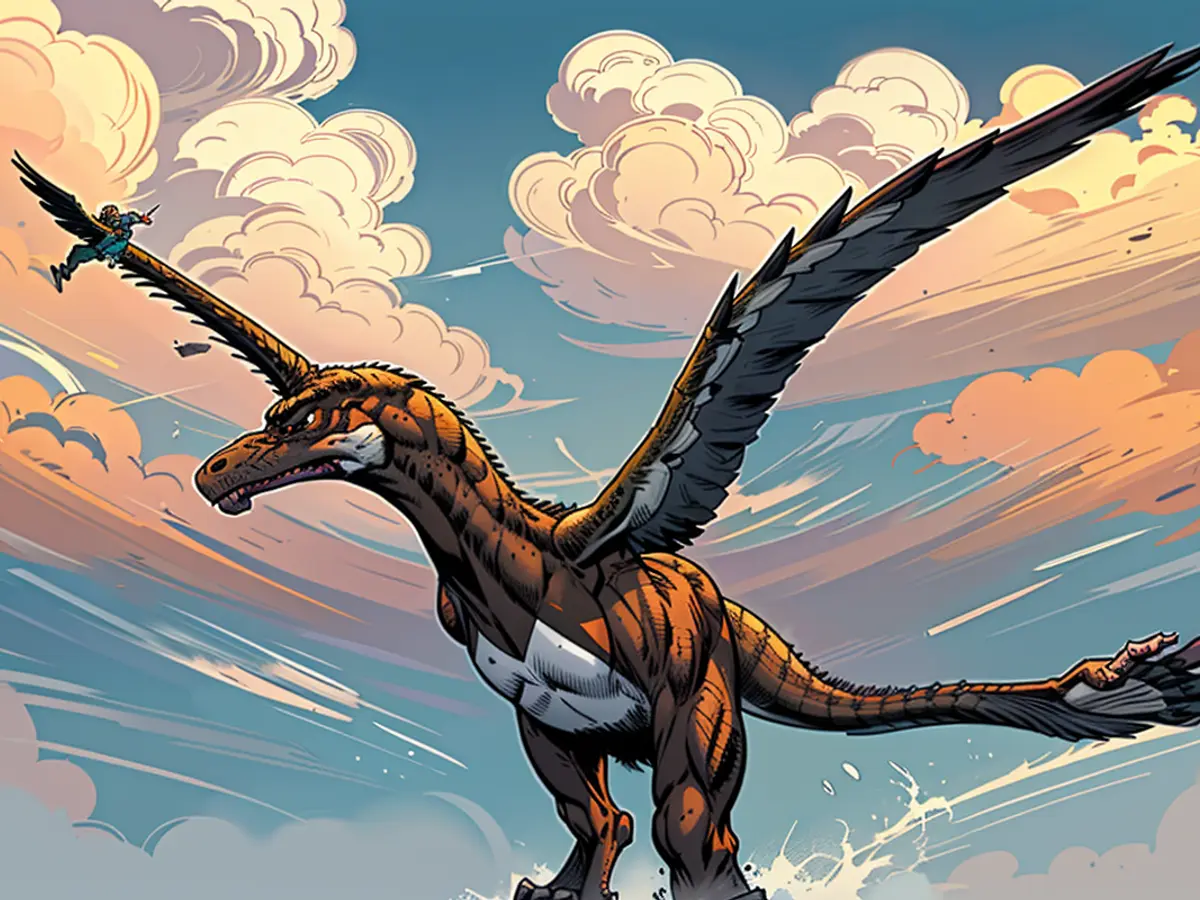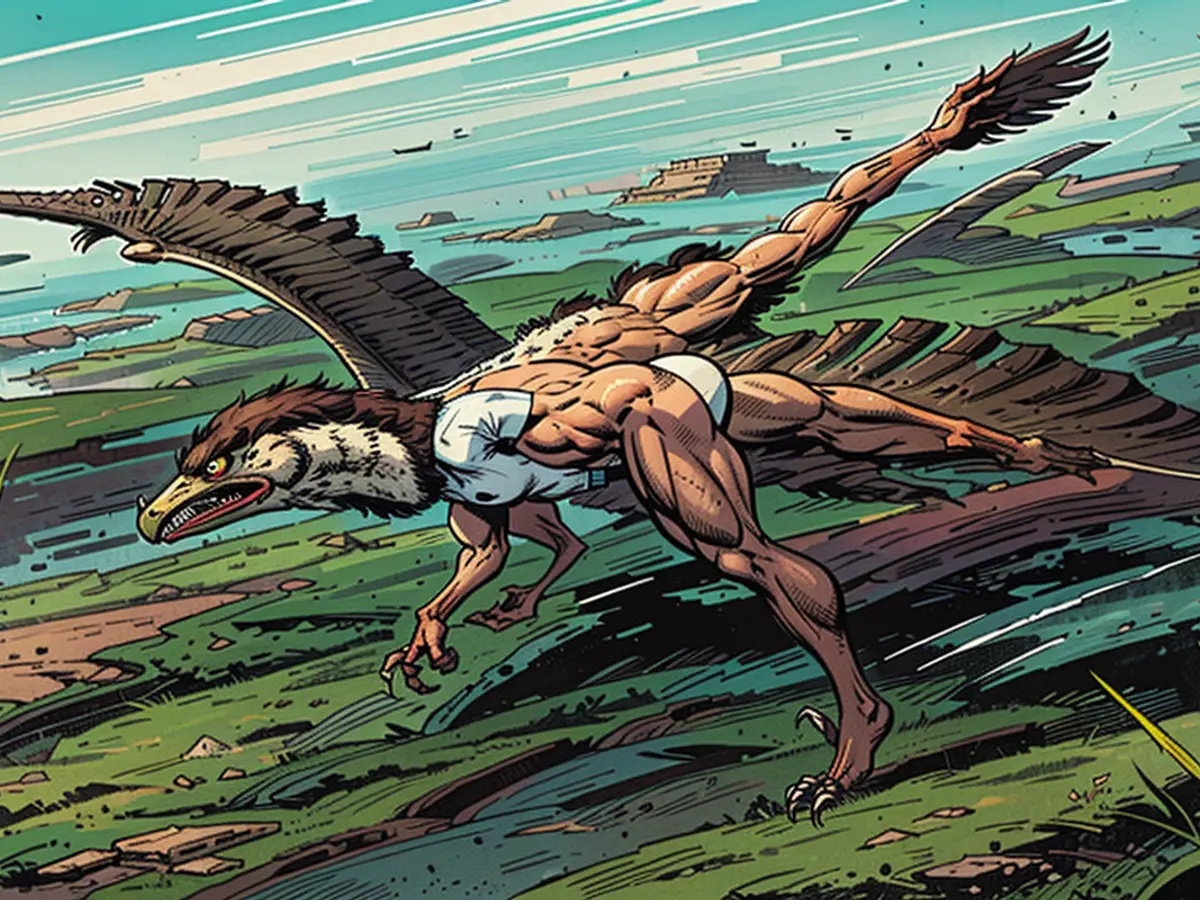pequeño dinosaurio avanzó en grandes pasos - y cómo lo hizo?
In South Korea, scientists have detected hints of a Microraptor, a miniature dinosaur with an impressive stride. Despite its minuscule dimensions, boasting a hip height of almost 5 centimeters and a one-centimeter foot length, it was able to take steps covering half a meter. Scientists have a theory to explain this anomaly.
It's proposed that feathered dinosaurs like the Microraptor might have utilized their wings to augment their stride length. This theory is substantiated by the Microraptor trace discovered in South Korea, which was featured in the journal "Proceedings of the National Academy of Sciences" (PNAS).
The trace reveals an odd ratio of foot size to stride length, approximately 1:53. The researchers speculate that the small dinosaur may have employed wing flaps to generate lift.
Aerodynamic forces in play?
The team led by Alexander Dececchi from Dakota State University and Michael Pittman from the Chinese University of Hong Kong attributed the trace to the Microraptor Dromaeosauriformipes rarus. Another Microraptor footprint was reported in South Korea in 2018. The researchers questioned whether these Microraptor tracks were generated solely by the force of the hind legs or if aerodynamic forces generated by the forelimbs also played a role.
They analyzed the stride-to-foot length ratio in comparison with 2638 other known theropod tracks and 508 non-theropod tracks. The ratio of about 53:1 was significantly larger in the analyzed trace. The scientists estimated a speed of 37.8 kilometers per hour with an hip height of only 4.75 centimeters. Known Microraptor skeletons vary between 47 to 77 centimeters in length.
Small body size as a prerequisite
The researchers calculated the Froude number, indicating the ratio of running speed to hip height. The trace resulted in a Froude number of 238, significantly higher than that of a cheetah (approximately 130) and an ostrich (around 60).
Dececchi, Pittman, and colleagues suggested that a small body size was a crucial requirement for flight capability. "This implies that there were certain 'windows' during which growing feathered dinosaurs could have phases of wing-assisted locomotion, gliding, or powered flight," they wrote. However, specific features like limb length and muscle volume would have had to be finely tuned.
The trace consists of three impressions: two from the right foot and one from the left foot in between. Therefore, the researchers are cautious about making definitive statements about the flight-like behavior that caused the trace. The trace fossil may document a takeoff, landing, accelerated descent, or wing-assisted stride elongation. They conclude: "But we can say that the trace formation involved a behavior that included the generation of aerodynamic forces and contact with the substrate."
The Microraptor, a species of feathered dinosaur, is not limited to ground travel as suggested by the detection of a Microraptor in South Korea. The researchers suggest that the small dinosaur may have used its wings to generate lift, a theory supported by the unusual ratio of foot size to stride length found in the Microraptor trace.








